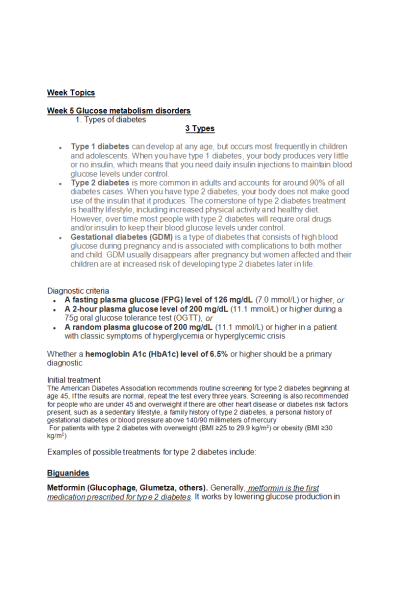Week Topics
Week 5 Glucose metabolism disorders
1. Types of diabetes
3 Types
- Type 1 diabetes can develop at any age, but occurs most frequently in children and adolescents. When you have type 1 diabetes, your body produces very little or no insulin, which means that you need daily insulin injections to maintain blood glucose levels under control.
- Type 2 diabetes is more common in adults and accounts for around 90% of all diabetes cases. When you have type 2 diabetes, your body does not make good use of the insulin that it produces. The cornerstone of type 2 diabetes treatment is healthy lifestyle, including increased physical activity and healthy diet. However, over time most people with type 2 diabetes will require oral drugs and/or insulin to keep their blood glucose levels under control.
- Gestational diabetes (GDM) is a type of diabetes that consists of high blood glucose during pregnancy and is associated with complications to both mother and child. GDM usually disappears after pregnancy but women affected and their children are at increased risk of developing type 2 diabetes later in life.
Diagnostic criteria
- A fasting plasma glucose (FPG) level of 126 mg/dL (7.0 mmol/L) or higher, or
- A 2-hour plasma glucose level of 200 mg/dL (11.1 mmol/L) or higher during a 75g oral glucose tolerance test (OGTT), or
- A random plasma glucose of 200 mg/dL (11.1 mmol/L) or higher in a patient with classic symptoms of hyperglycemia or hyperglycemic crisis
| Instituition / Term | |
| Term | Summer 2020 |
| Institution | Chamberlain |
| Contributor | Chantara |


























































